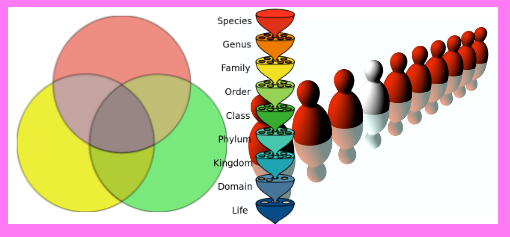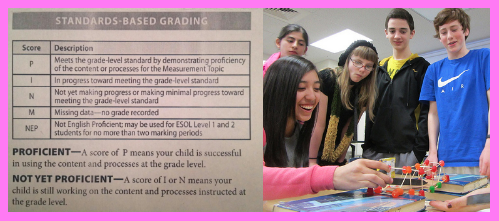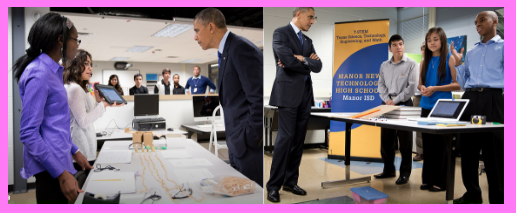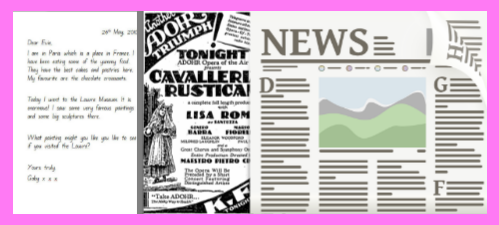Chapter 8 in Berger, Ron, Leah Rugen, and Libby Woodfin. Leaders of Their Own Learning: Transforming School through Student-engaged Assessment. Print.
Purposes / Uses:
- Tie grades to specific understandings and learning
- Communicate progress to students & their families about progress towards concrete goals (transparency)
- Measures mastery at closure of grading period – not on average over the period
- Make connection between work habits and skills more clear
Guiding Principles
- Grades describe student’s progress and current level of achievement. This involves:
- considering trends in student work – especially most recent ones because these reflect more time to develop mastery
- multiple opportunities for students to show mastery
- Habits of scholarship are reported separately from content mastery grades. This involves:
- keeping separate grades for assessments of character learning targets (in New Tech schools – this may be covered by showing the learning outcome grades separate from the content grades)
- scaffolding and assess character learning targets, just as one does for academic learning targets
- Grades communicate (not motivate or punish). This involves:
- knowing that low grades are not a motivation for better habits
- early communication of grading criteria
- Student engagement is the key to success. This involves:
- teaching students how to effectively self assess their knowledge and use it to plan next steps
- knowing that effective self assessment leads to more feelings of self-efficacy
- believing that all students can succeed with the right supports
- comparing work to standards not to other students’ work
- Communicating clearly about achievement. This involves:
- realistic accounting for early mistakes
- opportunities to learn and improve
- Engaging students. This involves:
- students playing an active role in understanding and assessing learning targets
- Holding students accountable. This involves:
- holding students accountable to academic AND character learning targets
- having frequent conversations about what that accountability means and using those conversations to guide learning
Getting started involves …
- developing and using learning targets to guide curriculum, instruction and assessment
- building supporting learning targets that build towards long term learning targets
- defining clear character learning targets based on school-wide behavior expectations
- committing to student-engaged assessment practices
School-wide implementation involves …
- formulating and communicating school-wide grading guidelines to ensure school-wide consistent grading. These include expectations for …
- building body of evidence for mastery
- using formative and summative assessments
- fine tuning instruction in response to assessments
- vertically aligning curriculum that prioritizing essential standards and shows a clear progression from grade level to grade level
- developing consistent criteria for meeting or exceeding proficiency on learning targets
- professional development on good practices relating to writing, scaffolding and assessing learning targets
Casco Bay High High School’s Grading System
- 1 = Does not meet standards. Does not demonstrate substantive progress towards learning target over the course of several assessments.
- 2 = Approaches the standards. Substantive progress towards learning target, but more time needed for mastery
- 3 = Meets the standards. Demonstrates competency in learning target.
- 4 = Exceeds standards. Demonstrates deeper level of understanding / skill than learning target required.
Sample Guidelines for Determining Progress Towards Long Term Learning Targets
- Break long-term learning targets into several supporting learning targets that scaffold up to long term targets
- Create assessments built on supporting learning targets
- Assess long term target over the course of several assessments tied to relating supporting learning targets
- Require students to demonstrate long term target RELIABLY not PERFECTLY
- Value and reward long term progression towards mastery of long term learning targets over early demonstrations of mastery that can not be reproduced reliably later
- Base mastery of long term learning targets on multiple summative assessments
Different approaches to passing courses:
- Base passing grade on average grade over all learning targets
- Passing course can only occur if student passes ALL learning targets. Scores 3 or above (see above) on all learning targets. (Casco Bay HS approach)
Reporting on habits of scholarship. This involves:
- Consistent school-wides standards for assessing and reporting grades on character learning targets
- Interesting features of Casco Bay example:
- Uses 1-4 grading scale on character learning targets (similar to academic learning targets)
- HOW honor roll for students who earn 3 or above on all character learning targets
- HOW scores of 3 or above on all character learning targets can NOT fail. Instead get an incomplete and extra support and time (2 wks) to meet academic learning target criteria
- Structures for supporting students who don’t meet character learning targets. This can include:
- Team teacher meetings that brainstorm how to provide support to students who are struggling to meet targets
- Regular student opportunities for self assessment on character learning targets
- More formal individualized intervention programs for students who are still failing to meet standards by the end of the grading period
Examples of Student-Engaged Assessment Practices:
- Regular formative assessments
- Descriptive feedback that supports multiple revisions of work
- Formal presentations of learning
- Passage presentations – students present their progress to an audience
- Assessments tied to meaningful work
- Peer and self assessments made by comparing work to established criteria tied to learning targets
Checklist for Quality Assessment Plans:
- Learning targets are high quality:
- aligned to standards
- includes ONLY ONE clear, aligned verb
- divided into long term and supporting standards
- student friendly language
- I can … format
- collection includes variety: reasoning, knowledge & skills targets
- knowledge and skills targets build up to reasoning targets
- collection includes prioritized collection of content, literacy, numeracy & character learning target
- Summative Assessments:
- multiple opportunities to demonstrate mastery of long-term learning targets
- clear assessment tools used to measure mastery
- learning targets and assessment tools align
- collection is varied in format and type
- motivate students
- includes smaller formative assessments
- aligned to standards
- Formative Assessments:
- formative assessments for each supportive learning target
- prepare students for summative assessments
- accommodates multiple learning styles
- motivate students
- clearly communicate learning target and means to achieve them
- involve self & peer assessment and reflections
Supporting Students who need Additional (outside class) Time & Support
- Intensives
- 4-8 day remediation courses
- intense focused study on learning targets not met
- students who don’t need these have menu of electives to choose from
- earns back lost credit
- involves 1-on-1 conferences, small group instructions, lots of formative feedback
- Block seven
- extra study hall period with teacher support
- Mud season school
- opportunity to earn 3’s on character learning targets and 2+’s on academic learning target
- Summer standards intensives
- See above. Takes place in summer instead of school year.
- Out of class tutorials
- afterschool, before school, Saturday, etc
Woah! This looks hard. However some advantages I can see:
- better communication of what students are actually learning
- better means to target support
- assessments that reward reliable knowledge built over time instead of averages over instances of learning that may or may not be reliable
- clear separation between scaffolding, assessments and consequences (both good and bad) for academic and character learning targets
- school-wide consistency on how grades are assigned
- school-wide consistency on how students are supported in their efforts to achieve mastery
- stronger professional culture in staff that emerges from school-wide agreements, training, & experimentation related to meaningful assessment practices

Preparation Steps
- Identify a team of guinea big teachers who are willing to commit to building prototype systems that lay the foundation for this strategy. These systems:
- break up courses into long term and supporting learning targets
- establish agreements on high priority character learning targets and develop long term and supporting targets for these
- define consistent means for assessing long term and supporting learning targets
- Conducting classroom trials to test and refine these systems
Early Implementation Steps
- Guinea pig team of teachers implement and refine prototype systems described above
- Consolidate tested strategies into a Faculty Standards Based Grading Guide
Advanced Implementation Steps
- Wide implementation of Standards Based grading based on field guide and related professional development sessions
- School-wide agreements are made and supported that relate to grading and support structures

























